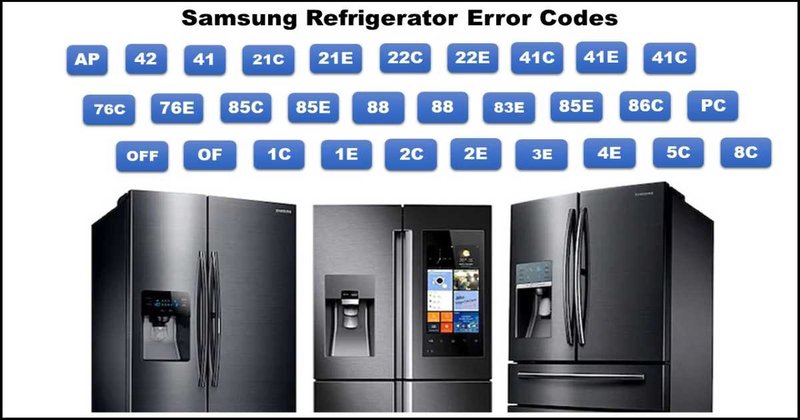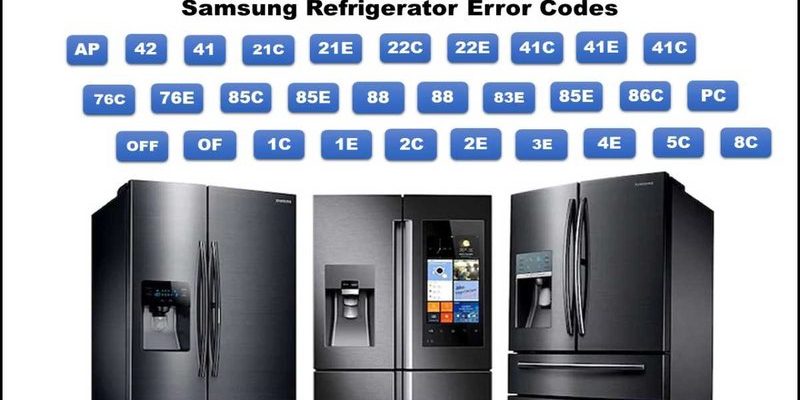
The E3 error code is essentially your refrigerator’s way of signaling that something is off with the defrost function. Imagine your refrigerator as a mini-itself-contained weather system. Just like how clouds might need to clear for the sun to shine through, the defrost cycle in your fridge ensures that frost doesn’t build up and block the efficient cooling of your precious groceries. When this system hits a snag, perhaps due to a faulty component or a communication hiccup, the E3 code pops up on the display. But fear not—just like resolving a simple puzzle, understanding what triggers this code can help you figure out how to fix it.
Understanding the Defrost Cycle
To grasp why the E3 error happens, we first need to dive into the defrost cycle itself. The defrost cycle is like your refrigerator’s internal reset button. It’s the appliance’s way of melting away any frost that might have accumulated in the freezer section. Over time, if left unchecked, this frost can gather into a full-blown ice barricade, making it harder for the fridge to keep things cold. So, the defrost cycle steps in to warm things up a bit and keep ice buildup at bay.
Think of the defrost cycle as a short coffee break for your fridge. It pauses the cooling for a brief period and lets a heater element kick in to melt the frost. Then, the water from the melted frost drips into a tray and evaporates. This cycle is crucial for maintaining the right balance inside your fridge—too much frost and you’ve got problems, but the right amount keeps everything running smoothly.
However, if something goes awry during this cycle, you might see the E3 error code appear. This malfunction could be due to a faulty defrost timer, the heater element not turning on, or even a defective defrost thermostat. Each of these components plays a role in the cycle, and if one of them falters, it’s like trying to complete a group project with one person missing—things just don’t work as they should.
Common Causes of the E3 Error
Alright, let’s delve into some of the common culprits behind this pesky E3 error code. One of the primary offenders is a faulty defrost timer. Think of this timer as the conductor of an orchestra, ensuring each part of the cycle happens at the right time. If this timer breaks down, the defrost heater might not activate when it’s supposed to, allowing frost to pile up.
Another common cause is the defrost heater itself. This component warms up and melts the frost on the evaporator coils. If it stops working, it’s like expecting a cozy fire in a fireplace but realizing you’re out of matches. Without the heater doing its job, the frost stays put, and the error code appears on your fridge like a red flag.
Sometimes, the issue might lie with the defrost thermostat. This little gadget keeps an eye on the temperature of the evaporator coils. If the thermostat fails, it might not be able to “tell” when the heater should turn on or off. Imagine trying to bake cookies without a timer and no clue of how long to leave them in the oven. You’d probably end up with something burnt or underdone!
Troubleshooting Steps
Now that we’ve identified some usual suspects, let’s talk about how to troubleshoot this error. First, a basic reset might work wonders. Unplug your fridge for a few minutes, then plug it back in. This action sometimes clears minor glitches in the system. It’s like restarting your computer when it freezes—simple but surprisingly effective.
If the reset doesn’t work, the next step would be to check the defrost timer. You might need to manually advance it with a screwdriver and see if the defrost cycle kicks in. If not, consider replacing the timer. Similarly, inspect the defrost heater and thermostat using a multimeter to see if they have the proper continuity. If there’s no continuity, it’s time for a replacement.
Keep in mind, safety first! Always ensure your refrigerator is unplugged before attempting any repairs. If you’re not comfortable working with these components, it may be best to call in a professional. They’ll have the expertise to diagnose and fix the problem without second-guessing.
Preventing Future Error Codes
Once you’ve tackled the E3 error code, you’ll want to make sure it doesn’t rear its ugly head again. Regular maintenance is your best defense. Think of it as a health check-up, but for your refrigerator. Periodically inspect the defrost system components to ensure they’re in good condition.
It’s also a good idea to keep the back of the fridge clean and dust-free. Dust can affect how the compressor and evaporator fan operate, which might indirectly influence the defrost cycle. Just like a clean kitchen makes cooking more enjoyable, a clean back panel can keep your fridge running smoothly.
Finally, make sure you’re not overloading the freezer. Too much food packed in can restrict airflow, leading to frost buildup. It’s like trying to fit too many people into a small elevator—it’s cramped, and things don’t move as they should.
By understanding these common causes and taking proactive steps, you can ensure that your Samsung refrigerator stays in top shape, keeping your food fresh and your mind at ease. If you ever doubt what to do next, remember that consulting with a professional can be a smart move. Happy troubleshooting, and here’s to a frost-free future!
